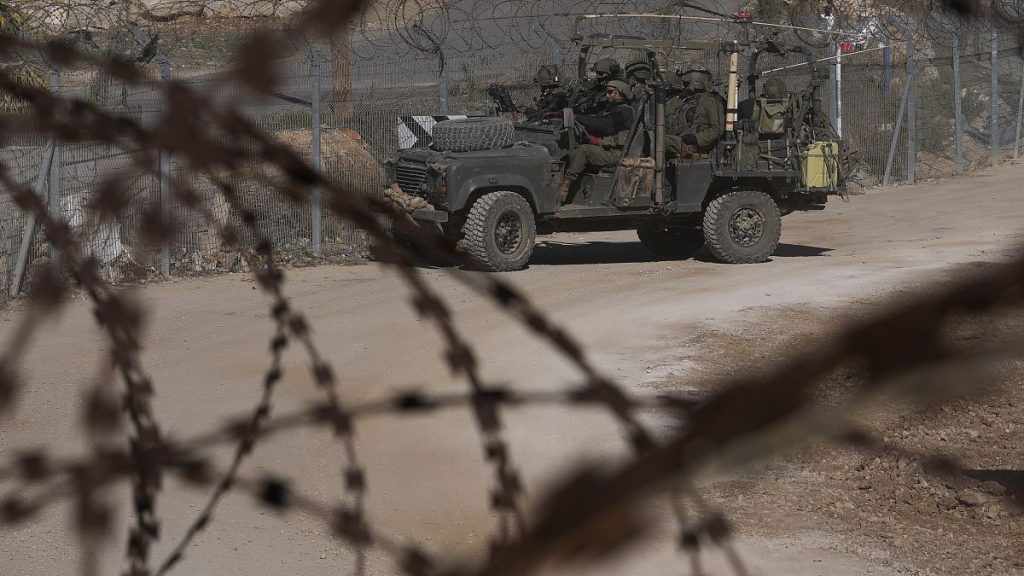The Israeli government’s approval of plans to bolster settler presence in the Golan Heights has ignited a new wave of controversy in the already volatile Middle East. This decision, announced following the collapse of Bashar al-Assad’s regime in Syria, reflects Israel’s strategic calculus in the face of a rapidly changing geopolitical landscape. Prime Minister Benjamin Netanyahu, citing the emergence of a “new front” in Syria proximate to Israel’s border, championed the plan as vital for national security. The initiative earmarks 40 million shekels (€10 million) towards doubling the settler population in the Golan, a territory captured from Syria in the 1967 Six-Day War and subsequently annexed in 1981. It is crucial to note that the expansion plan specifically targets the area seized in 1967 and does not encompass any territory acquired after Assad’s downfall. This distinction underscores the specific historical and legal context underpinning Israel’s claims to the region, while also signaling a cautious approach towards further territorial expansion in the current volatile environment.
The Golan Heights, a strategically significant plateau overlooking the Jordan River and the Sea of Galilee, is home to approximately 31,000 Israeli settlers, residing in settlements considered illegal under international law. Alongside them live approximately 20,000 Syrians, predominantly Druze Arabs, who remained in the area after the 1967 conflict. This demographic mix adds another layer of complexity to the already sensitive issue of settlement expansion. While Netanyahu’s government frames the plan as essential for demographic development and security, critics argue it further entrenches Israel’s control over disputed territory, exacerbating tensions with Syria and the broader Arab world. The international community largely regards Israeli settlements in occupied territories, including the Golan Heights, as violations of the Fourth Geneva Convention.
Netanyahu, while emphasizing Israel’s commitment to safeguarding its security interests, sought to downplay the potential for escalating conflict with Syria. He reiterated that Israel has no desire for confrontation, despite Syria’s historical role as an “active enemy state.” He highlighted Syria’s past attacks on Israel, its facilitation of attacks by other groups, and its allowance of Iranian arms shipments to Hezbollah through its territory. This historical context underscores the deep-seated mistrust and animosity that have characterized relations between the two countries for decades. However, Netanyahu’s assertion that Israel’s policy towards Syria will be guided by “the emerging reality on the ground” suggests a pragmatic approach, leaving room for potential adjustments based on the evolving situation in Syria.
The fallout from Assad’s ouster and the rise of Hayat Tahrir al-Sham (HTS) has added another dimension to the regional dynamics. Israel has carried out numerous airstrikes in Syria, targeting alleged weapons depots to prevent their seizure by terrorist groups. HTS leader Ahmed al-Sharaa has condemned these strikes as crossing “red lines” and potentially destabilizing the region. This exchange highlights the precarious security situation and the potential for rapid escalation. Israel’s concerns about weapons falling into the hands of extremist groups are juxtaposed against HTS’s condemnation of Israeli military intervention in Syrian territory. The complex interplay of these actors further complicates the already challenging geopolitical landscape.
The Israeli settlement expansion plan has drawn sharp criticism from regional powers, including Saudi Arabia and Qatar. Both countries have denounced the move as undermining Syria’s stability and violating international law. These criticisms reflect the broader Arab world’s concerns about Israel’s actions in the Golan Heights. The condemnations also highlight the delicate diplomatic balancing act required in the region, as countries navigate the shifting power dynamics and the complex web of alliances and rivalries. Qatar’s re-engagement with Syria, marked by the reopening of its embassy in Damascus, adds another layer to the intricate regional diplomacy in play.
The United Kingdom’s acknowledgment of diplomatic contact with HTS, despite its designation as a terrorist organization, further underscores the complexities of the situation. Foreign Secretary David Lammy explained that this contact, while controversial, allows for communication and potential influence. This cautious engagement reflects a pragmatic approach towards addressing the challenges posed by HTS’s presence in Syria. The UK’s position, mirroring that of the United States, highlights the difficult choices faced by international actors seeking to navigate the complex political and security landscape in Syria while upholding their counter-terrorism commitments. This evolving relationship with HTS underscores the constantly shifting dynamics in the region and the need for flexible and adaptive diplomatic strategies.














